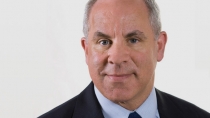Programs for Struggling Teens: Ideal Features- Part II
The professional literature on adolescent development and programs for struggling teens suggests that, ideally, programs should have a number of key features. These principles should underpin any efforts to help struggling teens and their families along every point in the continuum of care, including initial assessment, crisis intervention, home-based services, community-based counseling, alternative community-based education, mentoring, drug and truancy courts, wilderness therapy programs, emotional growth boarding schools, therapeutic boarding schools, and residential psychiatric treatment. Parents of struggling teens, and the professionals who work with them, should seek to identify programs that embrace these principles, in addition to those presented in Part I (principles 1-3).
Principle 4. Disciplinary methods should use logical, natural consequences that are safe and fair. Teens must be provided with unambiguously written rules and information about which behaviors will earn the teen more independence and privileges. The consequences of rule violations must be spelled out in advance and administered consistently and fairly. “Discipline” that blindsides the teen, and consequences that come out of nowhere for transgressions the teen did not know about, are forms of emotional ambush that corrode mental health, contradict research evidence on “what works,” and violate key principles of the strengths, resilience, and developmental perspectives.
Principle 5. Complete and comprehensive licensing and accreditation by all relevant organizations are crucial. A school or program that serves struggling teens, whether publicly or privately funded, should be fully credentialed by all relevant educational, behavioral health, health-care, child welfare, and residential care organizations. One must be aware that some components of a program, for example, the educational curriculum, may be accredited by an educational organization, while other components may not be, such as the program’s dormitory program or counseling services. A program or school may cleverly camouflage its shortcomings by obtaining licenses and credentials selectively. The end result is that professionals and parents may be given a false sense of assurance that the overall program meets minimum standards.
Some programs are in the no-man’s land left by the erratic patchwork of accreditation, regulatory, and licensing organizations. For example, a privately owned “character education” boarding school that mistreats students may not be subject to investigation by state child abuse investigators because the school falls outside the agency’s legislatively mandated purview. No single entity—private or governmental—has overarching authority to monitor, investigate, and prosecute negligent and abusive programs and schools in the struggling teen industry. Oversight is fragmented and piecemeal. Different regulatory functions are performed by different oversight agencies. For example, a health-care complaint might be directed to the state health department. Complaints about educational curriculum might be addressed by regional organizations that accredit schools. Accusations of criminal misconduct might be investigated by the state or county prosecutor. But where would a teen or parent go with crucial concerns about such issues as verbal abuse, enforced sleep deprivation, untrained dormitory staff, forced exercise to the brink of exhaustion, using male students to physically restrain sexually abused female students, and so forth? It is in these interstices that many abuses flourish.
Accreditation agencies typically require schools and programs to undergo a thorough review that includes periodic site visits, interviews with teenagers and staff, and examination of school and program policies, programs, documents, and records. The goal of the accreditation process is to ensure that programs and schools meet standards regarding admission procedures, services provided, staffing, health and safety practices, facilities, governance and administration, and finances. Accreditation does not guarantee that programs and schools are of high quality, but it does demonstrate that programs and schools are willing to undergo outside review and scrutiny and attempt to meet standards. Unfortunately, even an accredited program may be of questionable quality. A program or school may have high-quality written policies that are not followed in actual practice. It may put on a good face during an accreditation site visit, only to return to negligent, unethical, and abusive practices once site visitors depart. Program and school administrators may handpick the students, clients, patients, parents, alumni, and staff members for interviews with site visitors and keep disgruntled individuals out of sight. So, parents cannot rely on accreditation alone for quality assurance.
Various organizations accredit programs and schools for struggling teens. Parents and professionals need to determine which accrediting bodies are relevant to a program or school and get written verification that the program or school is properly accredited by all relevant bodies. Prominent accreditation organizations include the Commission on Accreditation of Rehabilitation Facilities, which accredits alcohol and substance abuse treatment programs; child and youth service programs; mental health and behavioral health programs; and supported living programs. Also, the Joint Commission on Accreditation of Healthcare Organizations accredits a wide range of health-care organizations, including behavioral health programs that serve struggling teens; and the Council on Accreditation accredits organizations that provide community-based and residential services such as alcohol and chemical dependency counseling; case management; supported and independent living; individual and family counseling; and day treatment.
In the United States regional, rather than national, organizations accredit educational institutions—including boarding schools that serve struggling teens. The major and most prominent regional organizations are the Independent Schools Association of the Central States; Independent Schools Association of the Southwest; Middle States Association of Colleges and Schools; New England Association of Schools and Colleges; North Central Association of Colleges and Schools; Pacific Northwest Association of Independent Schools; Southern Association of Colleges and Schools; and the Western Association of Schools and Colleges.
In the next installment I will share some additional principles that should guide the school and program choices of parents and the professionals who work with them.

Frederic Reamer Ph.D. Bio
Dr. Reamer is a professor in the Graduate Social Work Program at Rhode Island College.
Learn More